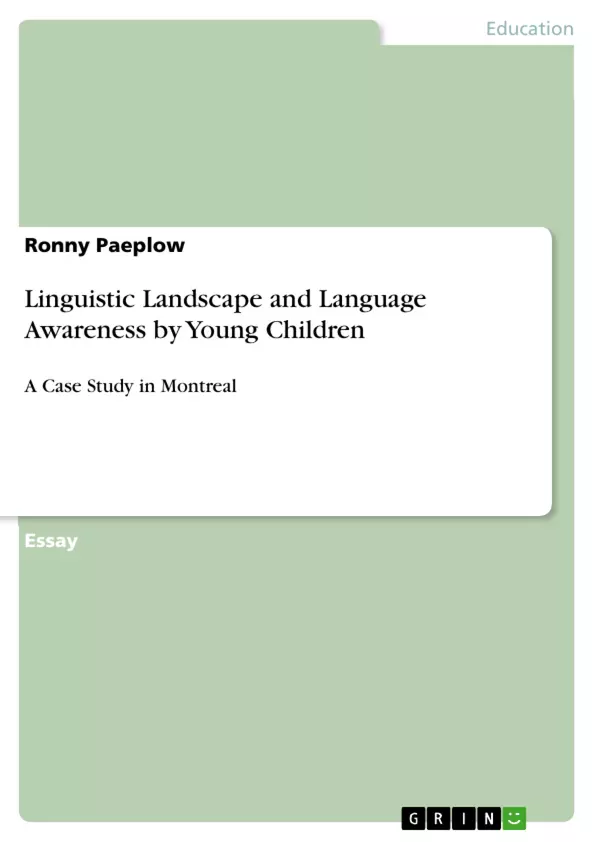Introduction
In this term paper I want to present a case study done by Diane Dagenais, Canièle Moore, Cécile Sabatier, Patricia Lamarre and Françoise Armand from 2005 – 2008 in Montreal and Vancouver. In doing so, I will give a background of Montreal, followed by a description of their research method. I will also offer criticism. At the end I will summarize the findings.
Montreal
Montreal is the second largest city of Canada and the largest city of Quebec. It was founded in 1642 and called 'Ville-Marie', meaning 'City of Mary' (cf. Manzagol 2001: 15).
According to Canada Statistics (2006 Census) the Montreal metropolitan area had a population of 3'588'520 and only 8.96 percent of it could not speak the official language of the city, namely French.
Most of the immigrants who arrive in Quebec settle in Montreal (cf. Manzagol 2001: 24). “The immigrants form 45 % of the population of Montreal-City”1 (Manzagol 2001: 25). Statistics show that the number of immigrants (to Quebec) who can speak neither English nor French in the years from 1996 to 2000 has quintupled in the years from 2001 to 20062.
Montreal is also a city of growing economy, especially in 'high tech' and pharmacy (cf. Manzagol 2001: 15-17). These facts, together with the good gross domestic product of Canada3, show that Montreal is an ever-growing, multicultural city.
Inhaltsverzeichnis (Table of Contents)
- Introduction
- Montreal
- Linguistic Landscape and Language Awareness
Zielsetzung und Themenschwerpunkte (Objectives and Key Themes)
This term paper presents a case study conducted by Diane Dagenais, Canièle Moore, Cécile Sabatier, Patricia Lamarre and Françoise Armand in Montreal and Vancouver. It aims to provide background information on Montreal, describe the research method employed, offer critical analysis, and summarize the findings.
- Linguistic landscape as a tool to understand urban multilingualism
- Language awareness among young children in a multicultural environment
- The role of education in promoting language awareness and diversity
- The impact of immigration on linguistic landscape and language diversity
- The importance of research in pedagogical practice
Zusammenfassung der Kapitel (Chapter Summaries)
- Introduction: Introduces the case study conducted by Diane Dagenais et al. in Montreal and Vancouver, outlining the paper's scope, objectives, and structure.
- Montreal: Provides a brief overview of Montreal's history, demographics, and socio-economic factors, highlighting its multicultural nature and importance in the context of linguistic landscape studies.
- Linguistic Landscape and Language Awareness: Discusses the concept of linguistic landscape and its relevance to education. It presents the research goals and methods of Dagenais et al.'s longitudinal study in Montreal and Vancouver, focusing on documenting elementary school students' interactions with diverse languages in their communities.
Schlüsselwörter (Keywords)
The key concepts and themes of this paper include linguistic landscape, urban multilingualism, language awareness, multicultural education, pedagogical practice, and the sociolinguistics of Montreal and Vancouver.
- Arbeit zitieren
- Ronny Paeplow (Autor:in), 2011, Linguistic Landscape and Language Awareness by Young Children, München, GRIN Verlag, https://www.hausarbeiten.de/document/177440


